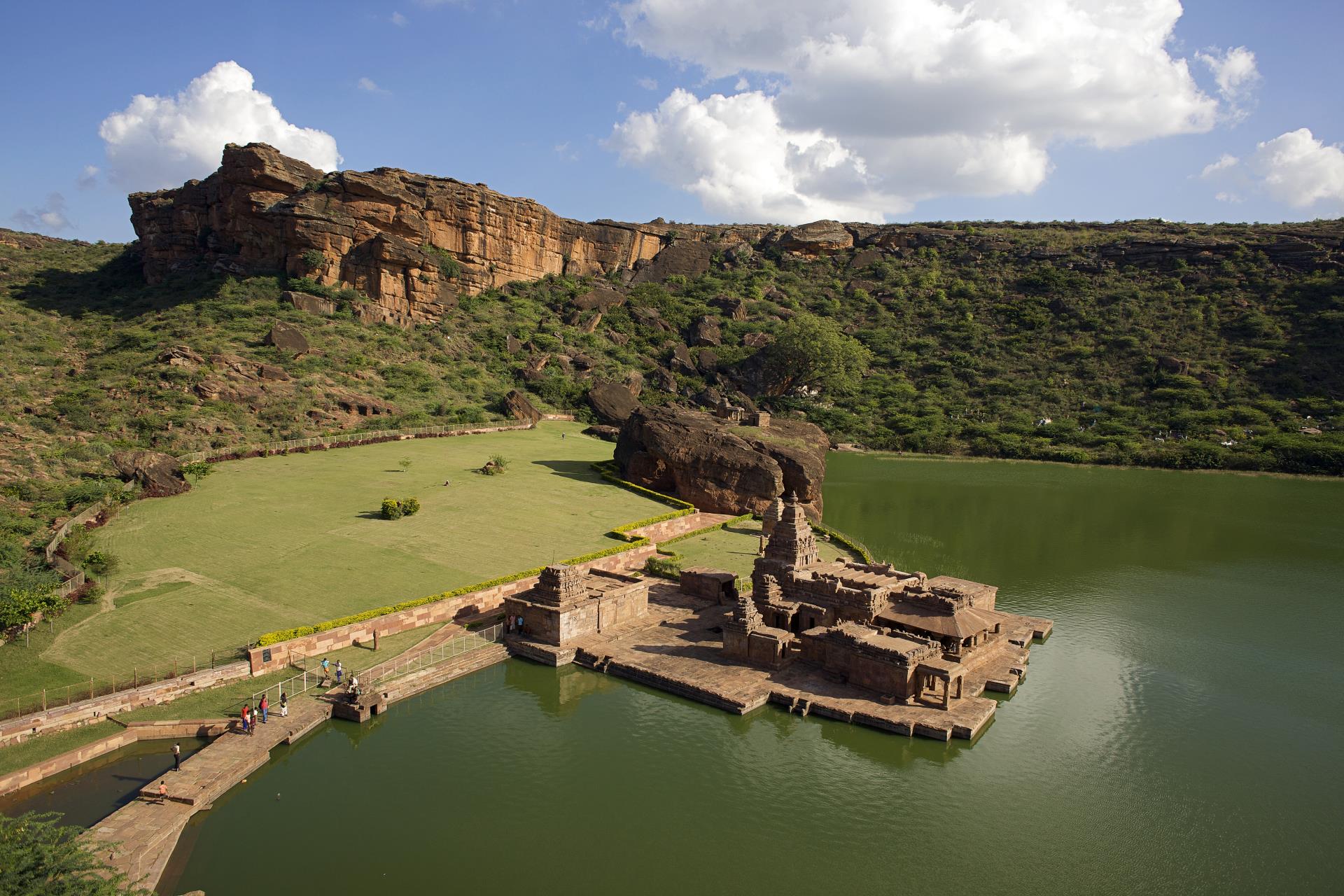
Sorry, we couldn't find anything that matches your search.
Destination

Famous Places to Explore in Hyderabad
A vibrant city with the imposing...

Raipur Tourist Places | Best Place to Visit
The stronghold of several erstwhile...

Ahmedabad
Declared as India's first UNESCO World...
#
Hemakuta Hill Temple
On the southern side of Hampi stands the Hemakuta Hill, its gentle slopes dotted with a large number of temples, archways and pavilions. It is said that the hill was once fortified with stone walls, the ruins of which can still be seen. Once you have reached the top (a 15-minute-climb), it flattens out like a small plateau. It is said that this is the place where the marriage of Lord Shiva and Goddess Pampa was finalised. Mythology says, skies rained gold (known as hema in Sanskrit, thus the name of the hill) at that time. There are several temples dedicated to Lord Shiva here, which have mesmerising structures that draw admiration from visitors. They are mostly triple-chambered, with pyramid-like roofs made of granite. They are quite different from the Vijayanagara architectural style prominent in this region and thus have often been confused with Jain temples.
Hemakuta Hill is also one of the best places in Hampi to enjoy fantastic views of the sunrise and the sunset.

Krishna Temple
The beautiful Krishna Temple draws visitors not only for spiritual reasons but also for its architectural sights. Said to have been built by king Krishnadevaraya in 1513 AD to celebrate his conquest of the eastern kingdom of Udayagiri or Utkala (in present day Odisha), the temple's main deity was a statue of Lord Balakrishna (Lord Krishna as infant). This idol is now housed in Chennai's Government Museum. A slab installed inside the courtyard of the temple tells the tale of the temple and of the victory. The temple's carvings standout from that of other structures in Hampi. With mythical lions on pillars and carvings of elephant balustrades flanking the entrances, the temple is a living work of art. A small pavilion with a rectangular stone container in front of the temple is said to have been used by devotees to offer grains to the gods.

Monkey Temple
Dedicated to Lord Hanuman, the monkey god, the Monkey Temple is a popular attraction of Hampi. It is a coracle ride away from the main ruins in the city, across Tungabhadra, and is situated on the Anjaneya Hill. Folklore says it marks the birthplace of Lord Hanuman. According to Hindu mythology, Lord Hanuman was born to Mata Anjana and thus, was named Anjaneya, with his birthplace being called Anjaneyadri (meaning Anjaneya's hill). Sitting atop the hill, the temple is visible from a distance, with a trail of stairs leading up to it. Keep around 40 minutes in hand to climb up. The temple has an image of Lord Hanuman carved on a rock and a small shrine inside has been made for Lord Rama and Goddess Sita. The view from the top is breathtaking as the temple overlooks green paddy fields, coconut tree plantations and the ruins stretching into the horizon. The entire area is encircled by rugged mountains and a raging river adds to its pristine beauty.

Vittala temple
The 16th century Vittala Temple, one of the most ornate monuments in the area, represents the best of Vijayanagara architecture. Popularly known as Hampi's showstopper and decorated with extravagant carvings, the temple's highlight is a spectacular stone chariot that stands in the courtyard. One of the finest examples of Vijayanagara style of architecture, it is said that the chariot is a shrine of Garuda, a bird-like mythical creature believed to be Hindu god Vishnu's vehicle. Legends say that the wheels of the chariot, decorated with intricate floral patterns, were once capable of being turned. Even now, looking at its spokes, it seems as if they would turn at a divine command. The chariot, the main temple and a few smaller structures are housed within a vast walled courtyard with three imposing gateways.
The main temple is dedicated to Lord Vitthala, an incarnation of Lord Vishnu. The mahamantapa (main hall) of the temple is flanked by elephant balustrades and is said to have been used as a venue for cultural performances. It is a fully developed temple with associated buildings like Kalyana Mandapa and Utsava Mandapa. The temple complex also has a large pushkarani (stepped tank) with a Vasantotsava Mandapa (a ceremonial pavilion) and a network of water channels. A unique feature of this temple is its elaborately carved musical pillars, which are said to produce the sounds of 81 different musical instruments when tapped with a wooden stick. Folklore says that the British were so fascinated by the pillars that they tore a few down to investigate how the music was produced.

Sasivekalu Ganesha Temple
One of the major landmarks in the heritage city of Hampi, this temple houses a huge statue of Lord Ganesha, carved out of a single block of rock. It is about 8 foot tall and was erected in memory of king Narasimha II, of the Vijayanagara empire, as per the inscription on it. According to Hindu mythology, once Lord Ganesha consumed a lot of food, due to which his stomach was on the verge of bursting. To stop his stomach from bursting open, Ganesha caught hold of a snake and tied it around his stomach. Thus, the explanation behind the snake that encircles Ganesha's stomach here. The statue sits under a large mandapa (covering) and is surrounded by a wall of pillars.

Virupaksha temple
Virupaksha Temple, one of the oldest structures in the area, is located at Hampi Bazaar. It is said that this temple, believed to have been built in the 7th century, was once a humble structure dedicated to Lord Shiva. Under the Vijayanagara rule, it was constructed upon to achieve epic proportions. Today, the main shrine is dedicated to Lord Virupaksha, an incarnation of Lord Shiva and the 49-m-high (approximately) tower or gopuram of the temple is said to have been constructed in 1442. Dominating Hampi's skyline, the towering gopuram is a distinct landmark in Hampi, as are the stucco figures around the temple's exterior. Hampi's only continuously functioning temple, it includes a sanctum sanctorum, pillared halls – the most elaborate one consisting of 100 pillars - antechambers, grand gopurams and a number of smaller shrines, along with a temple kitchen and administrative offices. The main gateway boasts elaborate nine tiers and the smaller gateway gives access to the temple’s inner courtyard. The three-headed statue of Lord Shiva's sacred mount, the Nandi bull, is a major tourist draw. In December, when the temple celebrates the marriage of its presiding deity to his consort Goddess Pampa, it draws thousands of devotees. Another popular time to visit the temple is February, when the annual chariot festival is celebrated.








